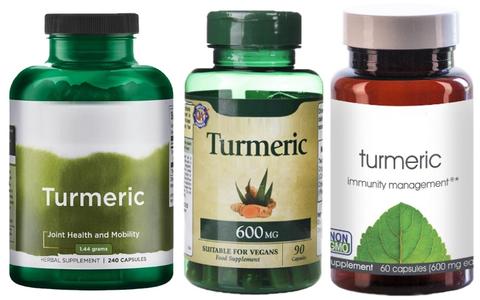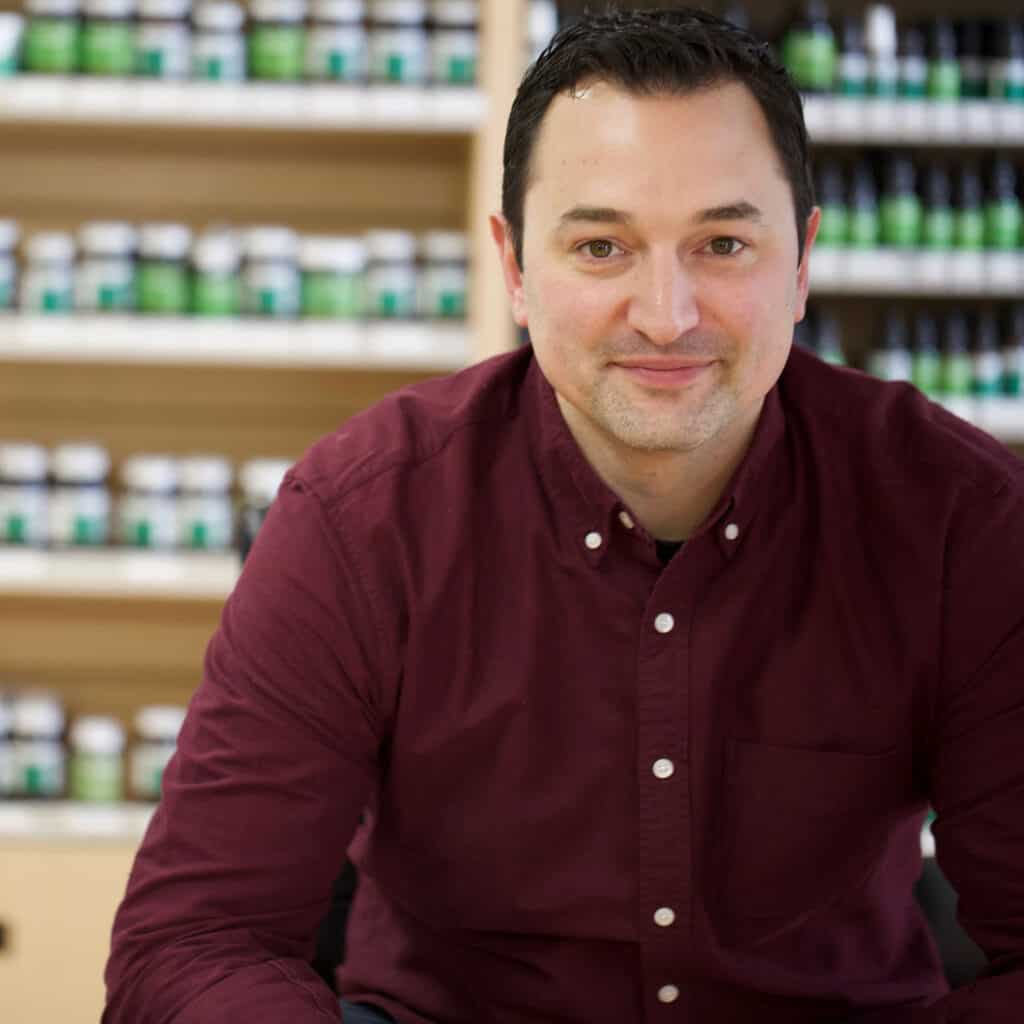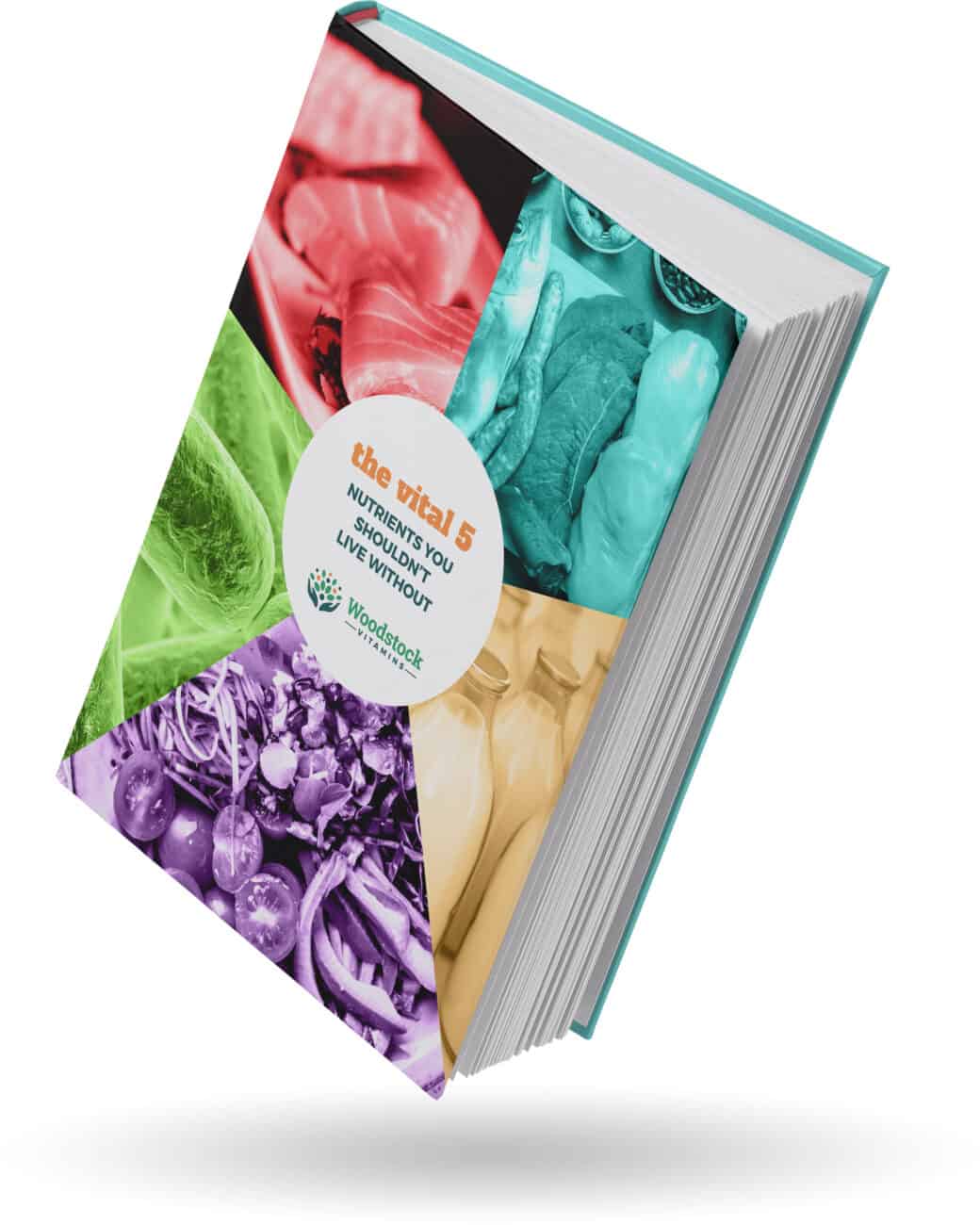I’m always trying to come up with new analogies and teaching tools to help people understand the insanely complex world of dietary supplements, vitamins, and other natural products. The first truth I teach is just that: buying supplements is WAY more complex than we think. We really need to take a break from our usual methods of buying health products, understand the big, natural products picture, and then make more informed decisions. This will save you money, give greater value, and could prevent you from using dangerous products.
The 3 Turmerics
A brief question for you: if you go to your local supplement bodega and want turmeric, how do you know which one to buy?

To consumers, they look the same. They all say turmeric. Unfortunately, supplement regulations are a bit wonky, and these three products can be vastly different in quality. Good manufacturing practices only cover so much, and we’ll go into depth on this in a future article.
If the fancy labels told the true story, the choice would be much clearer. Here’s a more apt comparison of the three:

The choice is clear here. All three are beef. Sometimes a McD’s cheeseburger is OK to use. Normally at 2am after a party when you’re 20. Ideally, we’d go for the higher quality, cleaner, more nutrient dense steak. Anyone voluntarily eating the moldy cheeseburger?
These 3 categories are what I believe supplements fall in to. In this article, a picture’s worth about 200 words because I’m not that good at MS Paint. I want to break down supplement products into big groups to help simplify the complexity. I’ve identified 3 types of supplements, 1 of them you should avoid like it’s a moldy cheeseburger.
The Supplement Bell Curve
If you’ve suffered through any introductory statistics class, chances are you’ve graphed out enough bell curves to DO SOMETHING FUNNY. If you haven’t, or need a refresher, a bell curve is a representation of how lots of things relate to each other. Most things are average, but some things can be really good or really bad.
Here is my hyper-accurate, 100% professional analogy for the three types of supplement products:

If you were to rate the quality of all the supplements on the market, you’d find that most are just “meh” and in the middle, some are really great, and some are super bad.
It’s not really evenly distributed though, as the picture portrays. I was being generous in that first picture. I’d say that in reality, it probably looks a bit more like this:

There are more products that I’d consider ‘bad’ on the market than there are those that are truly worth your hard-earned money. The middle, where you’ll have a good chance of an OK experience, isn’t even. It’s shifted to the lower-quality end of middle. And yes, even though an MD who graduates with a C- is still called a doctor, we kind of only want the best of the best rooting around in our brains if we needed such surgery.
Let’s dig into each type of supplement to better understand what’s out there.
Dumpster Fire Grade Supplements
The low end of the spectrum holds the worst of the worst products. These products traditionally are dangerous – and I’m not being my hyperdramatic self here. Contamination runs rampant because of corner-cutting. Quality control are two words that aren’t even listed in the business’s vocabulary individually, let alone together.
Quality – The potential for having grossness is high. Adulterants – things that don’t belong there that can have an ill effect if ingested – are often found. Like steroids in protein powders or bootleg Viagra in male enhancement pills. Contamination is a real issue; products can contain more than trace or naturally occurring amounts of heavy metals, pesticides, solvents, or more. Levels often exceed even the most generous “safe” ranges.
Grade of Ingredient – They normally have the cheapest of the cheap, meaning you may not even absorb or be able to use the nutrients. Dosing is sometimes way off; they sprinkle in small amounts of ingredients instead of proper doses to deceive.
Claims and Marketing – These companies make straight up lies and try to shove them down our throat about what the product will do. These claims are normally in brazen violation of basic regulations. Products are often misrepresented.
Costs – Because they’re cutting every corner, prices for these products tend to be low. That’s on the sticker, though. The actual value of the product is very low, since the dose and form of the product is so poor.
Ethics and Integrity – None exists here. They’re looking for the quickest way to make a buck and aren’t considering you, the environment, or their business practices.
These products are not rare. They are out there, and we must do our best to identify them. If I were to speak generally based on my experience, third party testing, and the public records of FDA enforcement actions, I’d tell you to be wary of:
- Chinese herbal products
- Many botanicals in general, as adulteration runs rampant
- Bodybuilder targeted supplements
- Many supplements targeted towards those conditions I identified in the 7 Deadly Deceptions
- A majority of CBD companies would fit in here, especially the ones at the gas station or flea markets.
The Mediocre Middle
These products are the purgatory of supplement land. They’re often not bad, but they’re not good either. They’re OK.
This mediocre middle is where a majority of supplements fall. This is actually an improvement, as when the regulations first were introduced, the FDA hit lots of companies for very basic regulatory failures. We’re moving along, but nowhere near where I believe the industry needs to be.
Here’s what a mediocre supplement is actually giving you:
Quality – I believe many of these companies are following general FDA regulations. They’re not working their butts off to deliver a top-notch product, but instead doing the minimal amount of work necessary to get by. There’s a good chance that adulterants will be minimal, though they still can pop up as these companies are not overly aggressive. Contamination is minimized, but profitability still is prioritized, so raw materials won’t be of the cleanest or highest quality out there.
Grade of Ingredient – Supplements in the mediocre middle will almost always use the most basic forms of the nutrients. In vitamins and minerals, this potentially means poorly absorbed and low bioavailable ingredients.You’ll get Vitamin C, but it just will be ascorbic acid. Plant and animal raw materials will pass basic tests, but won’t take into consideration best-in-class agriculture methods. Heavy chemical use (pesticides, herbicides, antibiotics, hormones), and mass farming methods are common.
Claims and Marketing – The mediocre middle supplements are typically smart enough to not make outrageous, law-breaking claims. They still misrepresent their products. The most common offense is taking a low-middle grade product and dressing it up to be a best-in-class or premium supplement. This is common for many lines marketed to practitioners, and unfortunately, those practitioners don’t have the resources to dig into the big picture and end up believing the hype.
Cost – Sticker price here is normally great! If you want “cheap” you can get it here. What I’ve found, though, is that many of these supplements are, at times, more expensive than the best-in-class types. Because they use lower doses or improper forms of the nutrients, it takes more to actually do anything, driving up prices. There are plenty of $20 fish oil products on the market, but if they deliver 1/5th the dose of high-potency fish oil like Alaskan Omega 900, your REAL cost greatly exceeds the best products. What’s worse, you’re not getting a clean product that takes into consideration the environment and sustainability.
Ethics and Integrity – Companies in the mediocre middle probably aren’t violating any ethical code directly with the manufacture of their supplements, but they’re not really leading here either. These are traditionally the mega-corporations, and we know how that all works out.
These products are the ones flooding the walls of supplement stores nationwide. They’re the brands we highlight in our 14 Mega-Corporations That Own Your Supplement Brand article.
For some, OK is good enough. I’ll make the argument why that isn’t true later. If you are buying a mediocre product, you should not be spending much at all. They are all the same, dressed up as premium. If you’re going to buy one of them, just buy the cheapest one, as I believe they are all the same.
Best-In-Class Supplements
These supplements are the ones I believe people REALLY want and think they’re buying. These are optimal on every front – ingredient grade, therapeutically, ethically, and are a great value (even if their costs are a bit higher).
Quality – Often these products will have aggressive quality specifications for their raw materials, meaning adulterants and contaminants are close to 0. They’re on top of the newest industry quality issues and actively work to keep their products as clean as can be.
Grade of Ingredient – The best-in-class supplements truly understand the product they are trying to bring to market, look at the research of what is best, and use only those doses and forms of nutrients. In some cases, they invent new technology to make the product work best. Our recent review of Collagen and Lutein demonstrates how superior ingredients can make a massive difference.
Claims and Marketing – Those in the best-in-class category are responsibly promoting their products. Even here, the marketing can get a little fuzzy, but that’s marketing in general. Making things look better than they sometimes are.
Cost – There is a belief that more expensive is better and better means more expensive. Neither of those are true; there is no relationship between cost and quality in the natural products industry. The consideration we must make around pricing is VALUE. This is why I stress to people that we should be looking at cost per mg. Otherwise, someone will have a fit about the $70 price tag, even though it has 5x the amount of the “more reasonably priced” CBD with the $40 price tag. Best-in-class supplements will be a lower total cost, as you are getting better products at better doses.
What I’ve found for cost is that the costs are more reflective of the true cost of producing high quality stuff. Raw materials, testing, and compliance costs money. This is why the bottom feeders and worst of the mediocre middle have a competitive advantage. They’re not spending the money, but pricing their products higher than reasonable.
Ethics and integrity – Best-in-class supplements not only are great products, but their businesses think about social issues.
Almost all of our products fit into this category (and they better otherwise I’d be garbage at my job!). Here are a few more brands that we believe are the best of the best:
- Wiley’s Finest Fish Oil
- Nutriplex Formulas
- Natren Probiotics
- Florajen
- Dr. Hauschka Skin Care
- Weleda Skin Care
- Gaia Herbs
- Vital Proteins Collagen
What Kind Of Supplement Do You Want?
The million dollar question is of course, what kind of turmeric do you want? Do you want the one that potentially has carcinogenic dye and synthetic curcumin? How about the one that is not standardized to the proper extract or contains black pepper? I’d think you want the form that has the highest concentration of active ingredients with minimal contaminants and no ingredients that can cause drug interactions.
Some people will say, “I’m ok with just OK supplements.” Great! You know what you want. As long as you are clear with what you are actually getting, I’m ok with it. Just don’t spend a lot A multivitamin in the mediocre middle is the same, therapeutically, if $5 or $40. It’s best to go for the cheapest price.
Many people are concerned about the grade of their foods. The chicken from Walmart is chicken and will get the job done. Your bottle of extra virgin olive oil may look great, but they have a real problem with adulterated oils, cut with cheap vegetable oils. With food, many of us consider the different variables around quality. We need to start doing the same with supplements, asking tougher questions.
“How do I know where my supplement falls?”
Great question. You don’t. Sorry 🙁 It’s nearly impossible to know the entire picture – to know which turmeric bottle you are getting when you go to the store. The extra-truth is that it’s difficult for us, who has made it our professional mission to know the entire picture. It takes a small army for us to stay on top of it: regulatory consultants, healthcare professionals, industry insiders, staff who research topics, and about 50 industry trade organization newsletters all together help us dig into this, though at times it feels like that even with all of this we are just skimming the surface.
“Well then how does this make my life easier?”
It kinda doesn’t. I hope to someday have something easy for everyone, but for now, the goal is to get people thinking more deeply about these decisions. We are all fueling a $40 billion dollar industry, and I don’t want it to be for nothing. Supplements and natural products are great. Holistic care is the answer, but snake oil and the salesman still exist. They’re making bank, and I don’t want you to help them get rich.
“Aren’t you just promoting your products here?”
Yes and no. No, because I sell plenty of mediocre middle products. Some people want cheap and easy. Some doctors are set on specific ingredients, doses, or forms. It’s a spectrum, so we carry the best of the “meh.”
Yes, because I’ve decided I don’t want to be a schlub like everyone else. I don’t want to just sell mediocre. I want to give people the wellness experience they think they’re getting.
That’s what this is all about – the lies. Supplements and natural products can work, but due to the regulatory landscape, supplement companies can dress up a pig and call it a princess. As a pharmacist, I was taught to SELL supplements, not TAKE them. Traditional practitioners often have a negative and dismissive view of nutritional supplements. I understand why, because so much out there is garbage sold based on misinformation. Some of it can be straight up dangerous.
We’ve created our Vitality Approved standards, a model for determining supplement quality using an evidence- based set of specifications and criteria. These points discussed today – quality, nutrient form, dose, cost, ethical factors, compliance with Food and Drug Administration rules – all are the key components of these standards. Someday these will be shared with the world, but for now I have to keep the specifics secret and speak in generalities with all of you.
The Next Steps
Once you fully understand that there are differences in supplement grades and how that can make quite a bit of difference, we need to take action. These steps will be covered in a future post.
For now, get ready to just ask more questions. Where does the product come from? Who owns the company? What is the track record of the brand? Is this a dose that will actually work? Am I getting the thing my body will actually use?
With this knowledge, your wellness regimen will be smarter, simpler, and more strategic. And definitely free of the bottom dweller moldy cheeseburgers of the vitamin world.
Just trying to keep it real…

Neal Smoller, PharmD
Owner, Pharmacist, Big Mouth



